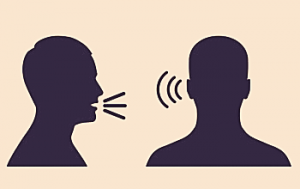Phonological vs Phonemic Awareness: What's the Difference?
Posted by Brainspring on 17th Jan 2019
Teachers frequently ask what the difference between phonological and phonemic awareness is. These two terms are often used interchangeably, however, there is a slight difference.
Both of these terms encompass being able to hear the sounds and patterns of language. Print is usually not utilized when initially teaching phonological or phonemic awareness activities.
What is Phonological Awareness
Phonological awareness the ability to hear and attend to different units of language. It includes various skills, such as identifying and producing rhymes, recognizing the number of syllables in a word, and understanding onset-rime. A student that is working on strengthening phonological awareness may be breaking apart a word into its syllables or they may be working on identifying the initial/final/medial sounds in words.
Why is Phonological Awareness Important?
Phonological awareness is a critical piece of early literacy development because it lays the groundwork for reading and spelling. Children who develop strong phonological awareness skills can better understand the structure of words, which is essential for decoding and word recognition.
For example, a child who can recognize that "bat," "cat," and "hat" all share a common ending sound is developing an understanding of how words are constructed. This ability to segment and blend sounds is not only important for reading fluency but also for spelling accuracy. Without a solid foundation in phonological awareness, children may struggle with more advanced literacy skills later on, as they lack the basic understanding of how sounds form words.
What is Phonemic Awareness?
When students are working with the individual sounds of language, they are working with fine-tuning their phonemic awareness. Phonemic awareness is a subset of phonological awareness and is the ability to identify, isolate, and manipulate individual sounds, or phonemes, in words. Phonemic awareness is a crucial skill for learning to decode words during reading, as it allows children to blend phonemes together to form words or segment words into their sounds.
The Role of Phonemic Awareness in Reading Development
Phonemic awareness plays a crucial role in reading development and it directly impacts a child's ability to decode words. When children can isolate and manipulate individual phonemes, they are better equipped to sound out words and understand their meanings.
For instance, the ability to blend the sounds /s/, /a/, and /t/ to form the word "sat" is a clear demonstration of phonemic awareness in action. This skill is not only essential for learning to read but also for developing strong spelling abilities, as it helps children understand the correspondence between sounds and letters.
Integrating Phonological and Phonemic Awareness with Phonics Instruction
Integrating phonological and phonemic awareness with phonics instruction is essential for creating a solid literacy program. Phonological and phonemic awareness lay the foundation for phonics, which teaches the relationship between sounds and their corresponding letters. By combining these skills, educators can help students understand not just the sounds in language, but also how those sounds connect to written symbols.
For example, once a child can isolate the sounds in the word "cat," phonics instruction can teach them how to match those sounds with the letters C, A, and T. This approach reinforces the connections between spoken and written language and leads to stronger reading and spelling abilities. By focusing on both phonological and phonemic awareness alongside phonics, educators can provide students with the tools they need to become fluent readers.
Phonological & Phonemic Awareness Resources
Phonological Awareness Resources
Learning & Teaching Resources:
- Phonological Awareness - All Teaching Materials
- Phonological Awareness: Essential Skills for All Readers
Blogs & Activities:
- Tying Phonological Awareness to Reading and Spelling
- Phonological Awareness Training: Overcoming the Hurdle to Success
- Multisensory Monday: Get Active With Phonological Awareness
- Phonological Awareness On The Go
- Phonological Awareness for Older Students
Phonemic Awareness Resources
Learning & Teaching Resources:
Blogs & Activities:
- 5 Ways to Practice Phonemic Awareness at Home
- Multisensory Monday: Driveway Phonemic Awareness
- Learning the Alphabet: How to Teach
- Phonemic Awareness for K-2
- Multisensory Monday: Sound Visualization
To take a deeper look into how phonics ties into phonological awareness, click here.
Written by Brainspring Educator Academy


